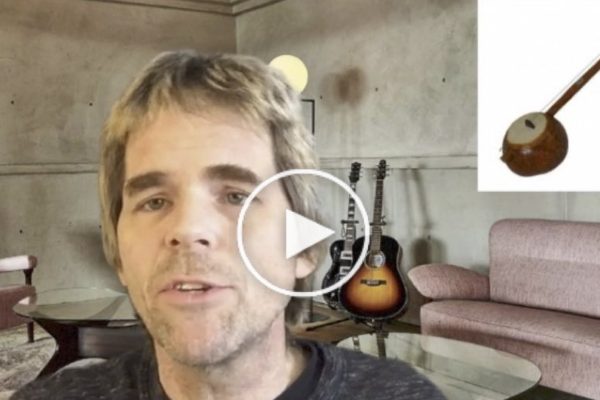 (Everything I am about to tell you is boiled down. Exceptions abound, I can’t tell the whole story in a few hundred words, and music is so big and complex that it wouldn’t be hard to find another angle on this. But I want to point out the way our ideas about music were deeply shaped by African culture, beyond rhythms and “blues scales.” You can watch my video below, read the post, or both.)
(Everything I am about to tell you is boiled down. Exceptions abound, I can’t tell the whole story in a few hundred words, and music is so big and complex that it wouldn’t be hard to find another angle on this. But I want to point out the way our ideas about music were deeply shaped by African culture, beyond rhythms and “blues scales.” You can watch my video below, read the post, or both.)
If you love blues, classic rock, jazz, or modern pop, you owe a debt to West African stringed instruments. Here’s why.
Classical European composition had a lot of rules, and one of the biggies was “avoid parallel motion.” This means that when multiple lines moved in a piece of music, they were not supposed to move in lockstep. There is a whole field of study called species counterpoint, designed to train budding classical composers to avoid parallel motion. The result was music that was able to exploit a few scales to the nth degree.
West Africa is where most of the slave trade happened. Stringed instruments there included multi-stringed harps like the kora, but there was a long and deep tradition of one or two stringed instruments, like the Akonting. These were “monophonic” instruments, on which only one note was played at a time. The melodies were mostly pentatonic, based on a five note scale (play the black keys on a piano and you’re playing a version of that scale).
When West Africans were taken to America, they encountered western instruments like guitars. which were designed to play western chord progressions. At some unknown time, many began to tune them to an open chord. Any slide guitar player, and many folk pickers, know this trick. It makes playing the usual range of chords harder, but it allows a player to treat the whole guitar as if it were one string. The result, at its most basic, is parallel major chords. A big no-no in classical music, but the foundation of a huge amount of modern progressions.
[amazon template=left aligned image&asin=B00004RCW1]This plays out in a lot of ways. In blues slide playing, a lot of these parallel major chords are most often laid out as a kind of pentatonic chord scale (example for players and theory heads – G Bb C D F). So the five note scale becomes a set of five major chords. The coda of “Free Bird” is one song where the instrumental techniques and the pentatonic chord set come together (G Bb C ad infinitum, with pentatonic scale riffing on top of it).In swing, jazz, and classic pop, the parallelism is expressed in a tendency to use parallel seventh chords (G B D F, e.g.). Sometimes the progressions are blues song patterns with different dressing, other times they are more related to classical music (the verse of “Hold Me Tight” by The Beatles is an example of parallel seventh chords without the blues pattern).
Of course, pop music is a vast scavenging beast that gathers up everything and re-purposes it. Anything you want to look for, you can find. But the course of twentieth century music was deeply and pervasively influenced by this break from classical and European folk progressions, and the growth of progressions based indirectly on West African music.
Comments and insights from musicians and non-musicians alike are most welcome, either here or on our Facebook page!
– Ken Hymes
PS. While we’re on the subject of instruments that had a huge influence on modern music, check out our post on the Hammond organ that remade jazz, rock, soul, and R&B. And on the subject of pop music, we’ve started a discussion on what makes the perfect pop song. Decide for yourself after reading In Search of Perfect Pop: The Greatest Song The Cars Never Made.



0 comments on “How Pop Was Born in West Africa”